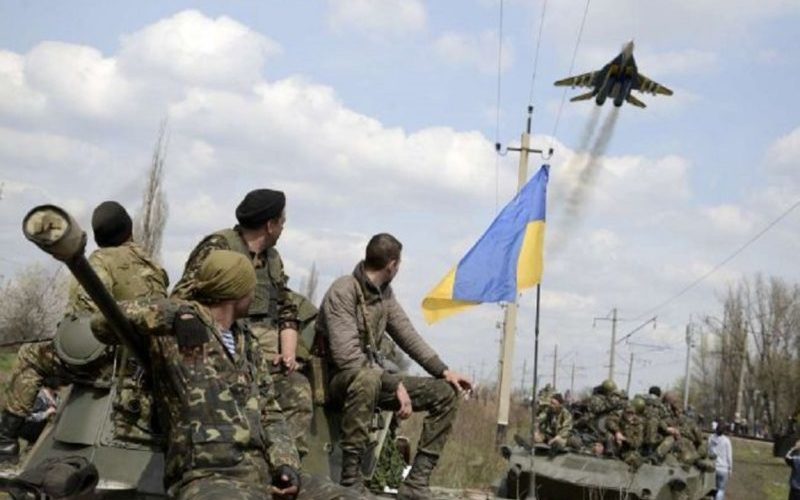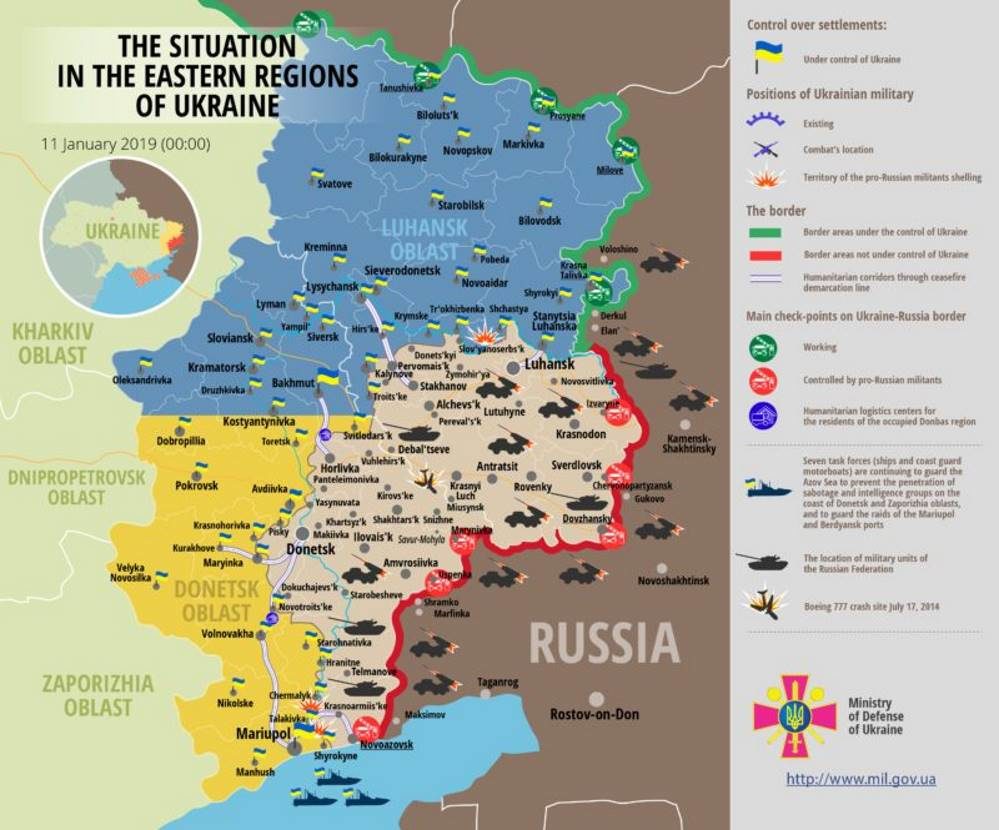Currently, there is no progress towards the implementation of the Minsk Agreements, amid constant ceasefire violations and the continued presence of heavy weaponry in the conflict area. There are growing military losses on both sides and ongoing civilian casualties. Moreover, monitoring by the OSCE's SMM (Special Monitoring Mission) faces severe impediments. Discussions within the framework of Normandy Four format and the Trilateral Contact Group (TCG) on key issues - the exchange of hostages, the ceasefire and withdrawal of heavy weaponry, and illegal formations from the Ukrainian territory - have also been fruitless.
No progress in ceasefire and constant impediments to OSCE monitoring
The provisions of the Minsk Agreements on the withdrawal of heavy weaponry and ceasefire control have been violated on numerous occasions. For instance, over just a couple of weeks in December 2018, there were over 20,000 recorded ceasefire violations and 160 weapons used in direct violation of the agreed withdrawal lines (most of the weapons were used by pro-Russian separatists, in areas controlled by them). Overall, since 2016, there has been a steady increase in ceasefire violations in the Donetsk region, with slightly fewer in the Luhansk region: in total, there were 320,000 and 410,000 ceasefire violations in 2016 and 2017 respectively. Although the final data for 2018 is not yet available, given this trend and reports throughout the year, we can expect the number of ceasefire violations to remain at the same or even higher level.
Comment: Here we see the author's bias coming to the fore, misrepresenting the OSCE's data. The vast majority of ceasefire violations are coming from the Ukrainian side. A small sample:
- Ukraine violates Minsk ceasefire 3 times in 24 hours: Shells Lugansk villages over 80 times
- No surprise: Donbass Republics report numerous violations of new ceasefire by Kiev troops
- Ukraine's forces violate ceasefire 41 times in a single day
- Kiev broke Donbass "bread truce" 35 minutes after it started
- OSCE monitor: Ukraine ceasefire violations in the thousands, inflict suffering on civilians
- Caught red handed: Leaked email reveals Kiev violated ceasefire many times
- Ceasefire broken (again!): At least 3 killed in Kiev shelling of residential Slavyansk
- Kiev is the aggressor: UN reports 90% of civilian casualties in Ukraine conflict within Lugansk and Donetsk regions
- Lavrov: OSCE cannot whitewash Ukrainian troops in Donbass anymore
Source: Information Analysis Center of Ukraine
The SMM continues to face difficulty with verifying the withdrawal of heavy arms and ceasefire control, freedom of movement and monitoring of situation along the perimeter of conflict area. In spite of an increase in OSCE observers, it remains problematic for the SMM to monitor the area of the front line of the conflict. The OSCE has at its disposal around 800 international monitors, backed up by a recently relaunched drone surveillance program and video cameras. Nevertheless, SMM's monitoring efforts have been constantly limited due to restrictions of its freedom of movement. In the period from 1 July 2017 to 30 June 2018, SMM personnel were restricted in its movement 758 times. A large majority of these incidents (87%) occurred in the territories that are under the control of pro-Russian separatists, up from 72% at the start of the given period, which suggests that the degree of obstruction of the SMM's work is increasing. At the same time, SMM's monitoring drones are often shut down in the territories controlled by pro-Russian separatists, and video surveillance cameras in the conflict area are attacked.
Comment: The OSCE's report did not attribute fault. Why wouldn't the Donbass want it's vital infrastructure monitored against attack? It's far more likely Ukraine would wish to be able to damage Donbass utilities without detection.
Since 2016, Ukraine has tried without notable success to reach an agreement on the permanent deployment of SMM's international monitors along the conflict zone border, within the framework of the Minsk Agreements. This has not materialized mainly because such a change in the mandate of the OSCE's SMM requires a consensus of all 57 OSCE Member States at the OSCE Permanent Council, and Russia will not support it.
Comment: Ukraine itself has been the chief obstruction to the OSCE's work. The OSCE keeps coming up with findings that are inconvenient for Kiev.
- What, no Russians with weapons...again? No ammunition moved through Russia-Ukraine border - OSCE monitors
- Four years on, OSCE chief certifies that there are NO RUSSIAN MILITARY FORCES in eastern Ukraine
- Senior OSCE executive praises Russian delivery of humanitarian aid to East Ukraine and expresses surprise at its politicization by some countries
- OSCE admits Ukrainian side violating agreement on transportation of heavy weapons
- Cover-up by obstruction: OSCE monitors shelled at MH17 site
- OSCE denies Kiev's claim monitoring mission was shelled by rebels
- OSCE confirms Ukraine shelling of observers at Donetsk airport
- Oops! Ukrainian 'security' forces blindfold, handcuff, detain OSCE monitor
- Former OSCE representative reveals all in Ukraine
Read the rest here.





Comment: Global Risk Insight is clearly a Ukrainian propaganda outlet. The remainder of the article is merely more spin and obfuscation in the service of Ukraine's illegal war against its eastern population.